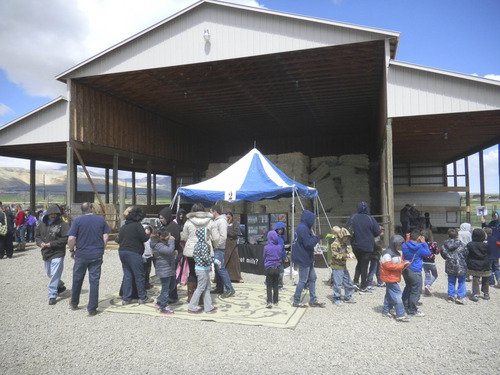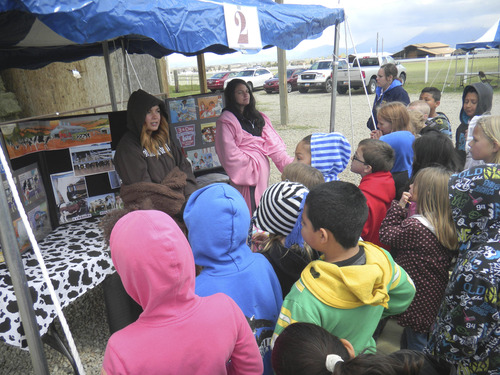This is an archived article that was published on sltrib.com in 2013, and information in the article may be outdated. It is provided only for personal research purposes and may not be reprinted.
Herriman •
Two starkly different events occurred in the southern part of Salt Lake County recently that served as a stark reminder that most urban residents have little idea about how their food is produced.
The first involved 25-year-old Amy Meyer, who was charged in late April with video recording what was happening at a Draper slaughterhouse co-owned by the city's mayor, Darrell Smith. The misdemeanor charges under Utah's relatively new agricultural-operation interference law ended up being dropped, likely because it was determined Meyer was standing on public property when shooting the video.
In a written statement sent to The Salt Lake Tribune, Meyer explained that she went to the slaughterhouse because she heard bystanders on public property could "witness the horror of cows struggling for their lives as they were led to their violent deaths."
About the same time in late April and early May, about 2,100 Salt Lake Valley fourth-graders visited the Butterfield Farm in Herriman, where farming and ranching organizations were sponsoring a more benign introduction to agriculture.
Kids went from booth to booth learning about things such as pig farming, milk, root vegetables and the West Nile Virus and viewing farm animals such as horses, sheep, llamas and pigs.
Vernon Parent, a Utah State extension agent who specializes in youth agriculture, explained that kids often learn about farm animals in school, but have no real experience on the farm.
"This is a great way for kids to experience a farm and learn where their food and fiber comes from," said Danie Bills, an events planner for Herriman City whose family has owned Butterfield Farm for generations.
Amanda Hansen, Jordan Kenney and Sam Bolduc, members of the Herriman Future Farmers Association, said they were trying to teach the younger students about where food comes from. Kenney said the students actually knew more than she expected.
The stories about the slaughterhouse and the kids learning about farming interested me because I love finding out about how our food is produced. I've been lucky enough to tour farm facilities where diverse items such as nuts, tortillas, honey, berries, mushrooms, pumpkins, wine, steaks, cheese and turkeys are produced, processed and readied for market.
I've also done extensive reading on the subject of food and the idea behind killing your own meat. One particularly interesting book I would recommend is The Omnivore's Dilemma by Michael Pollan.
The two most difficult were tours I've taken of slaughterhouses. One was on a cultural exchange trip to Venezuela, where I took the owner of a ranch up on an invitation to see where the steak I had just eaten was produced. The other was the tour of a turkey-processing plant in central Utah.
Both offered sobering reminders that animals die so we meat-eaters can consume them. It's a fact of life too easily ignored by the majority of us who buy our meat in neatly packaged wrappers and consume it without a second thought.
I was impressed by the cleanliness of the meat plants I visited. Death to the animals came quickly — probably not quickly enough for those who oppose killing for food, but quickly nonetheless.
I don't hunt or fish as often as I once did, but I have killed birds and fish and have eaten them for dinner. I never enjoyed the act of killing living things but understood that, in life, some things die so others can live. Even vegans must realize that in order for them to eat, food must be harvested from land that has been fundamentally changed, forcing native animals to either move or often die.
The hard reality is that for one species to eat, others are going to die.
Thus, I have a healthy respect for those who butcher our meat, those like Amy Meyer who remind us to think about where it comes from and for those educators who feel it is important for young students to have a basic understanding of what farmers do so we all can eat.
Twitter: @tribtomwharton





